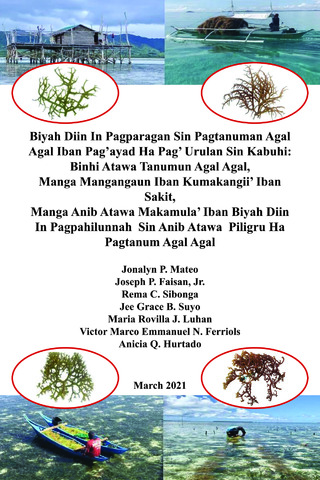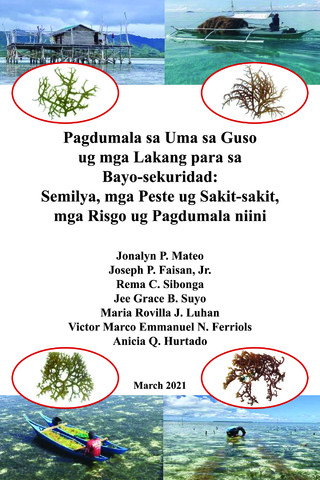| dc.contributor.author | Hurtado, Anicia Q. | |
| dc.contributor.author | Yunque, Dianne Aster | |
| dc.contributor.author | Tibubos, Keneth | |
| dc.contributor.author | Critchley, Alan T. | |
| dc.date.accessioned | 2014-05-23T09:49:29Z | |
| dc.date.available | 2014-05-23T09:49:29Z | |
| dc.date.issued | 2009 | |
| dc.identifier.citation | Hurtado, A. Q., Yunque, D. A., Tibubos, K., & Critchley, A. T. (2009). Use of Acadian marine plant extract powder from Ascophyllum nodosum in tissue culture of Kappaphycus varieties. Journal of Applied Phycology, 21(6), 633-639. | en |
| dc.identifier.issn | 0921-8971 | |
| dc.identifier.uri | http://hdl.handle.net/10862/2092 | |
| dc.description.abstract | Three varieties of Kappaphycus alvarezii (Kapilaran, KAP), Tambalang purple (PUR), Adik-adik (AA), and one variety of Kappaphycus striatum var. sacol (green sacol (GS) were used to determine the efficiency of Acadian marine plant extract powder (AMPEP) as a culture medium at different concentrations, for the regeneration of young plants of Kappaphycus varieties, using tissue culture techniques for the production of seed stock for nursery and outplanting purposes for the commercial cultivation of carrageenophytes. A shorter duration for shoot formation was observed when the explant was treated with AMPEP + Plant Growth Regulator (PGR = PAA + zeatin at 1 mg L−1) compared to AMPEP when used singly. However, four explants responded differently to the number of days required for shoot formation. The KAP variety took 46 days to form shoots at 3–4 mg L−1 AMPEP + PGR; while PUR required 21 days at 3–5 mg L−1 AMPEP and 3–4 mg L−1 AMPEP + PGR. AA required 17 days at 3–5 mg L−1 AMPEP and AMPEP + PGR; and GS 25 days at 1 mg L−1 AMPEP + PGR. It was observed that among the four explants used, PUR and AA initiated shoot formation with the use of AMPEP only at higher concentrations (3–5 mg L−1) after a shorter period. Only PUR responded positively to ESS/2 for shoot initiation. The use of AMPEP alone and/or in combination with PGR as a culture medium in the propagation of microplantlets using tissue culture technique is highly encouraging. | en |
| dc.language.iso | en | en |
| dc.publisher | Springer Verlag | en |
| dc.subject | explants | en |
| dc.subject | growth control | en |
| dc.subject | Neostriatum | en |
| dc.subject | plant extracts | en |
| dc.subject | powders | en |
| dc.subject | Ascophyllum nodosum | en |
| dc.subject | Kappaphycus alvarezii | en |
| dc.title | Use of Acadian marine plant extract powder from Ascophyllum nodosum in tissue culture of Kappaphycus varieties | en |
| dc.type | Article | en |
| dc.citation.volume | 21 | |
| dc.citation.issue | 6 | |
| dc.citation.spage | 633 | |
| dc.citation.epage | 639 | |
| dc.citation.journalTitle | Journal of Applied Phycology | en |
| dc.subject.asfa | nursery grounds | en |
| dc.subject.asfa | reproduction | en |
| dc.subject.asfa | seed (aquaculture) | en |
| dc.subject.asfa | seeds | en |
| dc.subject.asfa | shoots | en |
| dc.subject.asfa | tissue culture | en |
| dc.identifier.essn | 1573-5176 | |
| dc.identifier.doi | 10.1007/s10811-008-9395-4 | |
| dc.subject.scientificName | Kappaphycus | en |
| dc.subject.scientificName | Kappaphycus striatus | en |



